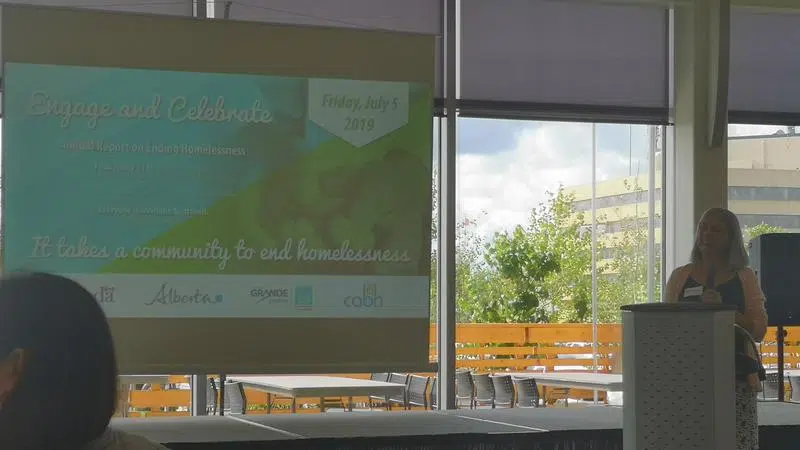
City provides report on ending homelessness in Grande Prairie
The City of Grande Prairie unveiled its report on year four of its five-year plan towards ending homelessness today at Teresa Sargent Hall. Representatives from the City, community organizations, and people with lived experiences were on hand to get caught up on the state of homelessness in the Swan City.
One of the speakers was Housing and Homeless Initiatives Supervisor for the City Katherine Schmidt. She spoke on some of the successes and areas of weakness within the plan, as well as laid out some goals for the next year.
One of those goals was to have a second supportive housing unit in place by next year, like what is offered for the residents of the Parkside Inn. In the process of doing that, more than just getting a building put up is needed to make that happen.
“We’re learning lots from the Parkside and other buildings across the province,” said Schmidt. “It’s key on having enough staffing. It’s also key in having Alberta Health Services, addiction and mental health supports and not just assume that a support worker is going to walk into a building with complex needs and be able to do all of that.”
